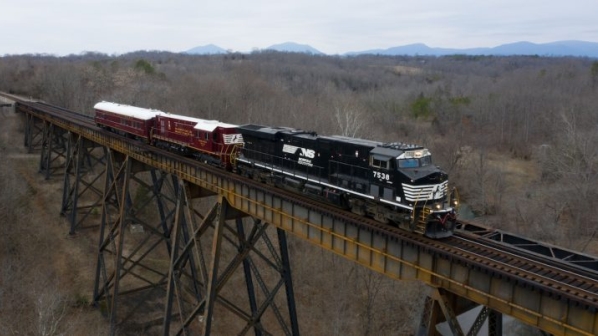Commercially available autonomous track-inspection systems are typically installed on converted freight wagons or passenger coaches, requiring an external power source and occupying space that could be used for revenue-producing freight.
“With our locomotive-based system, we use an existing asset to increase the frequency of our track inspections, without adding another piece of equipment that has to be run across the railway,” says Mr Ed Boyle, NS vice president, engineering. “This innovative approach enhances our safety practices by permitting us to have precise and quality track inspections done under load at track speed.”
NS worked with companies within the defence industry to identify commercially available components to build the system, which consists of lasers, gyros, accelerometers, and GPS sensors. The system can detect defects or anomalies in track geometry, including track gauge, and track elevation and curvature. Inspection data is transmitted wirelessly to office locations, where track geometry engineers confirm potential defects and notify track maintenance staff.
The system, developed by NS’ track inspection group, provides a robust and cost-effective way to continuously monitor track performance in near real-time. The technology is mounted in a ruggedised box under a six-axle locomotive between the snowplough and the first set of wheels. The computer powering the system is housed inside the electrical locker in the locomotive cab.
The retrieved data can be used to inform track maintenance activities and budgeting. The system facilitates compliance with both NS and Federal Railroad Administration track safety standards.
As part of a pilot project, NS is operating the autonomous system on a mainline between Norfolk, Virginia, and Portsmouth, Ohio, which offers a comprehensive range of track and operating conditions, including straight and curved track, hilly terrain, and high-tonnage loads.
“With this innovative system, any time this locomotive is moving and pulling freight, it is testing track at the same time,” says NS manager of track inspection and development, Mr Mike Allran, who helped lead the initiative. “This gives us more robust data for use in predictive-modelling to determine track maintenance intervals, which enables us to maximise efficiencies that will generate significant cost savings.”
The autonomous inspection system will supplement testing done by the company’s existing fleet of manned track geometry cars and road-rail vehicles. NS plans to equip additional locomotives with the system and potentially upgrade its capabilities, including adding an optical system to evaluate track components such as fasteners, rail welds, and switch points.

